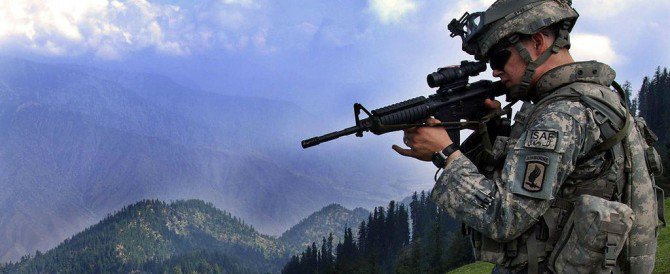Few analysts of Afghan affairs normally plough through the appendices in the back of the 200+ page quarterly reports from the American Special Inspector General for Afghan Reconstruction (SIGAR). But Appendices E and F of the latest release provide especially riveting reading: they list a mass of data that cannot be published in the report because it has been classified by the Commander of US Forces in Afghanistan. The problem is that this information is critical to fighting corruption and waste that has long undermined the US effort in Afghanistan
The decision to classify has been justified on the grounds the data is “sensitive operational information.” For a few items, that might be reasonable enough. For example, SIGAR requests “original unedited, high-resolution, publishable photos related to security development initiatives taken during the quarter.” This may just cover the sort of generic publicity images of training that the ISAF press office regularly churns out, but if the request includes images of security-related infrastructure, then there is a case that publishing those could carry a real risk.

But the classification goes far beyond this sort of case. The current guidance determining when information can be classified is Executive Order (EO) 13526, signed by President Obama in 2009, and it is hard to see how much of the data left out of the SIGAR report meets that standard – especially where it was previously given out freely or made public elsewhere.
Information now considered too classified for the American public includes the number of Afghan National Army (ANA) and Afghan National Police (ANP) personnel authorized, the number present for duty, the amount spent on them, and the total numbers and cost of their weapons.
Many programs that have been the subject of allegations about waste, misuse or abuse of funds are on the list: for example, the Law and Order Trust Fund for Afghanistan (LOTFA), a UN-run trust fund that pays the salaries of over 145,000 Afghan police. Since 2002, the program has handed out over $3 billion in aid to Afghan police, and has been the subject of a series of reviews, including some by SIGAR. But now the American public is unable to assess for themselves what all the fuss is about, and how their taxpayer dollars are being spent.
Also made secret is information on US-funded contracts for literacy training to Afghan National Security Forces, the $25 million budget for women in the Afghan National Army, and even the number of physicians and medical support personnel for the Afghan security forces.
And it is especially ironic that information about programs developed to improve transparency, accountability, and counter-corruption in the Afghan security forces cannot be released to the public. The classified topics include assessments of the anti-corruption initiatives in the Afghan security ministries and a confirmation whether a key US military anti-corruption task force has been dissolved.
The US government has been publishing broadly similar information every quarter for the past 6 years without any obvious problems. But it is vitally useful to exposing abuses and ineffectiveness in a program that will still spend billions in the coming years. SIGAR is among many bodies which have highlighted how lack of overall strategic vision, mismanagement, lack of oversight, poor contracting, and corruption of American funding in Afghanistan have led to mission ineffectiveness, and perhaps even eventual mission failure. SIGAR noted that the sudden classification of whole swaths of data “leaves SIGAR for the first time in six years unable to publicly report on most of the US taxpayer-funded efforts to build, train, equip, and sustain Afghan forces.”
EO 13526 states that data cannot be classified merely to prevent embarrassment of a person or agency, or to conceal a violation of law, inefficiency, or administrative error. But, as the New York Times Editorial Board has stated, “it strains credulity to believe that insurgents would become more proficient fighters by pouring over lengthy inspector general reports about an increasingly forgotten war. Classifying that information unreasonably prevents American taxpayers from drawing informed conclusions about the returns on a $107.5 billion reconstruction investment that, adjusted for inflation, has surpassed the price tag of the Marshall Plan.”
As Special Inspector General John Sopko put it, the “inexplicable classification [of this information] now and its disappearance from public view does a disservice to the interest of an informed national discussion.” Not only does it prevent the American public from understanding and evaluating the effectiveness of the blood and treasure that has been spent in the last thirteen years of the Afghanistan conflict, but it prevents lessons learned in Afghanistan from being used as the American military ramps up its support to Iraqi and Ukrainian security forces for crises there. After over $100 billion spent and 2300 US deaths in combat, the American public deserves better.